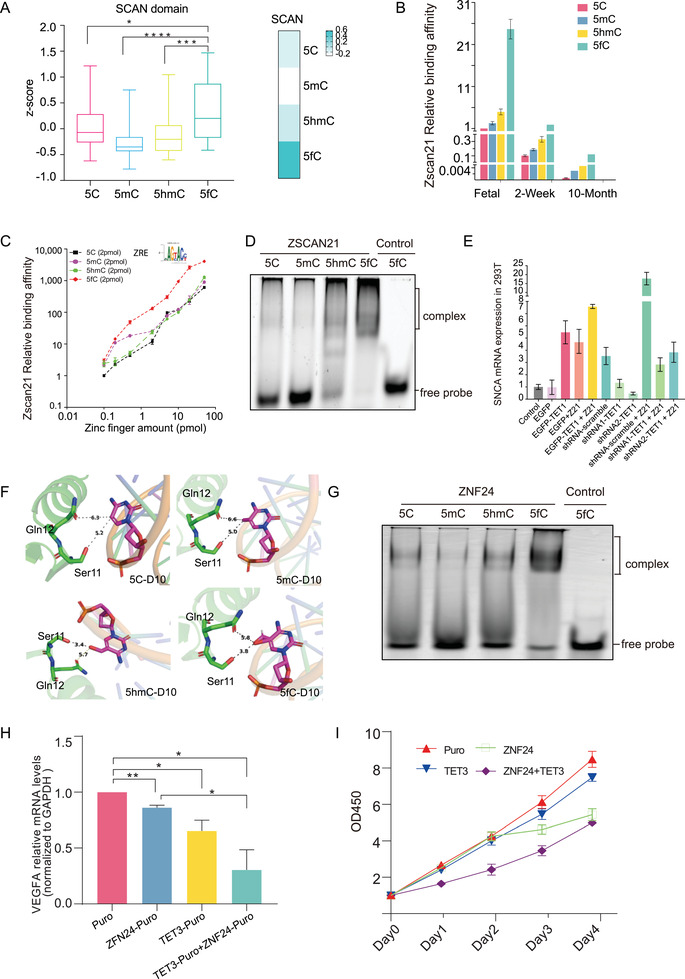Figure 7.

The validation of SCAN domain‐containing proteins ZSCAN21 and ZNF24 are potential 5fC readers. A) Box plot showed the SCAN domain binding activity to the four modified TFREs (pair tailed Student's t‐test p‐value < 0.05). For the box plot, the bottom and top of the box are first and third quartiles, and the band inside the box is the median of the z‐score. Heatmap showed the binding activity to the four modified TFREs; the darker the color, the stronger the binding activity. B) The binding priority of the endogenous ZSCAN21 in the mouse brain to 5fC‐modified TFRE based on our proteomic data. C) A series of concentrations of recombinant ZSCAN21 from 0.1 to 50 pmol were incubated with 2 pmol of the four types of modified ZREs. The MS identification and quantification have demonstrated that the 5fC‐ZRE had a higher binding affinity for ZSCAN21 than the other modified ZREs (n = 3 biological repeats). D) EMSA result of ZSCAN21. Four types of Cy3‐labeled DAN probes were used (5C‐(AAGTACC)5, 5mC‐(AAGTACC)5, 5hmC‐(AAGTACC)5, and 5fC‐(AAGTACC)5). A stronger mobility shift was observed in ZSCAN21/5fC‐(AAGTACC)5 group. E) RT‐PCR assay of SNCA level in various conditions. Overexpression of ZSCAN21 increased the expression of SNCA. Overexpression of TET1 also increased the expression of SNCA. ZSCAN21 and TET1 had synergistic effects in increasing SNCA abundance. F) Simulated the structure of the ZNF24–DNA binding motif complex. The gap of the ZNF24–TGCA motif interface was dramatically decreased from 5A to 3.4–3.8A when C was switched to 5hmC/5fC. G) EMSA result of ZNF24. Four types of Cy3‐labeled DNA probe were used (5C‐(TCAT)5, 5mC‐(TCAT)5, 5hmC‐TCAT)5, and 5fC‐TCAT)5. A stronger mobility shift was observed in ZNF24/5fC‐(TCAT)5 group. H) RT‐PCR assay of VEGFA level in various conditions. Overexpression of ZNF24 increased VEGFA expression. Overexpression of TET3 also increased the expression of VEGFA. ZNF24 and TET3 had synergistic effects in increasing VEGFA abundance. I) Cell proliferation assay associated with various treatments. Overexpression of ZNF24 in MCF‐7 cells inhibited proliferation; overexpression of TET3 also inhibited cell proliferation; the suppressive effect was enhanced when ZNF24 and TET3 were coexpressed.
